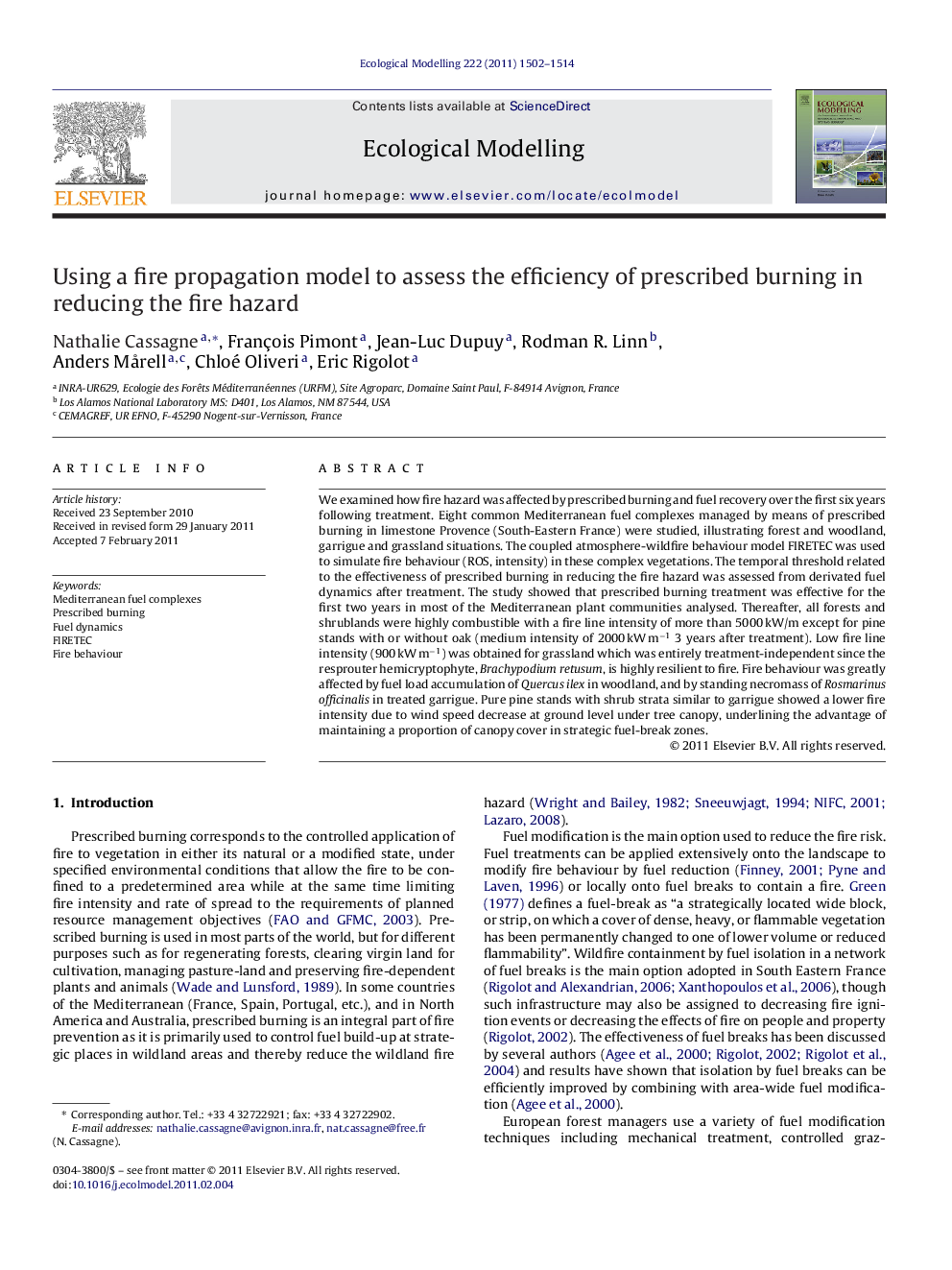| کد مقاله | کد نشریه | سال انتشار | مقاله انگلیسی | نسخه تمام متن |
|---|---|---|---|---|
| 4376979 | 1303403 | 2011 | 13 صفحه PDF | دانلود رایگان |

We examined how fire hazard was affected by prescribed burning and fuel recovery over the first six years following treatment. Eight common Mediterranean fuel complexes managed by means of prescribed burning in limestone Provence (South-Eastern France) were studied, illustrating forest and woodland, garrigue and grassland situations. The coupled atmosphere-wildfire behaviour model FIRETEC was used to simulate fire behaviour (ROS, intensity) in these complex vegetations. The temporal threshold related to the effectiveness of prescribed burning in reducing the fire hazard was assessed from derivated fuel dynamics after treatment. The study showed that prescribed burning treatment was effective for the first two years in most of the Mediterranean plant communities analysed. Thereafter, all forests and shrublands were highly combustible with a fire line intensity of more than 5000 kW/m except for pine stands with or without oak (medium intensity of 2000 kW m−1 3 years after treatment). Low fire line intensity (900 kW m−1) was obtained for grassland which was entirely treatment-independent since the resprouter hemicryptophyte, Brachypodium retusum, is highly resilient to fire. Fire behaviour was greatly affected by fuel load accumulation of Quercus ilex in woodland, and by standing necromass of Rosmarinus officinalis in treated garrigue. Pure pine stands with shrub strata similar to garrigue showed a lower fire intensity due to wind speed decrease at ground level under tree canopy, underlining the advantage of maintaining a proportion of canopy cover in strategic fuel-break zones.
Research highlights
► Fuel treatment is a main option to reduce the fire hazard in Mediterranean region.
► Mediterranean fuel complexes managed by means of prescribed burning were studied.
► Fire behavior (ROS, intensity) simulation in FIRETEC was analysed.
► Fuel reduction enables decrease in fire hazard the first two years after treatment.
► Increase in fire intensity may result not only from fuel characteristics but also from the model resolution.
Journal: Ecological Modelling - Volume 222, Issue 8, 24 April 2011, Pages 1502–1514